Story and photos by Jonathan Sharp
This year’s London Classic Car Show,now in its second year, has to my mind two unusual selling points. Firstly it is the only indoor show that I know of where some of the cars are actually driven during the event.
The second point is that you can arrive, if you want by cable car! The show is held at the Excel Exhibition Centre in London’s docklands area right on the banks of the River Thames; the cable car crosses the river. I however arrived by the more traditional method of a train. The show is aiming to be the Retromobile of London and whilst it is not there yet it is definitely moving in the right direction. Like Retromobile, the show is constructed around a cross section of main features with a selection of upmarket classic car dealer stands, and a smattering of car club displays making up the rest of the show.
This year the themed displays celebrated the McLaren F1 road car, “The Pinnacle of Rallying” (Group B rally cars), “The Evolution of the Super Car”, and for the first time in a separate hall, “Car Club Corner” where various car clubs could display some of their members’ pride and joy.
So how are the cars driven during the show? Down the center of the main hall the organizers had laid out what they described as the “Grand Avenue” on which the cars were driven over a few laps on several occasions on each of the three days of the show. This year rather than just drive a cross section of cars up and down the avenue the organizers decided to run a competition under the title “The Six Nations” in which the show attendees were invited to vote for which ever country they felt made the best cars. The countries nominated were Great Britain, France, Italy, Germany, U.S.A. and Japan. The winner was Great Britain. Well, the show was held in London.
Slightly surreal in the hall next to the car show was another event which celebrated modern pop culture and comic book characters. Walking to my show I had to navigate between people dressed as Star Wars characters and various other aliens and super heroes. My journey home started with joining a crowded train carriage in which I stood next to Spider Man, and this being London, nobody batted an eye lid.
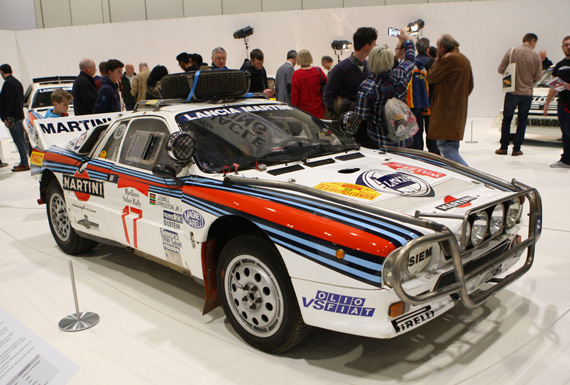
This Lancia 037 was originally driven by Attilio Bettage before being shipped to Kenya for the Safari Rally and testing. The car was driven by Vic Preston Junior on several Safari rallies and first place in the African championship. The car was returned to the factory in the 1990s and was kept in the Lancia Museum.

Blooming quick but blooming ugly this Lancia Delta S4 only had a short rallying career. Driven by Miki Biasion in the 1986 Portuguese rally in which all the factory teams withdrew after the Joaquim Santos crash, and again on the Tour De Corsica rally where again the entry was withdrawn following the death of Henri Toivonen and Sergio Cresto. Its final rally, again in the hands of Biasion was the Acropolis rally in which Biasion finished second.
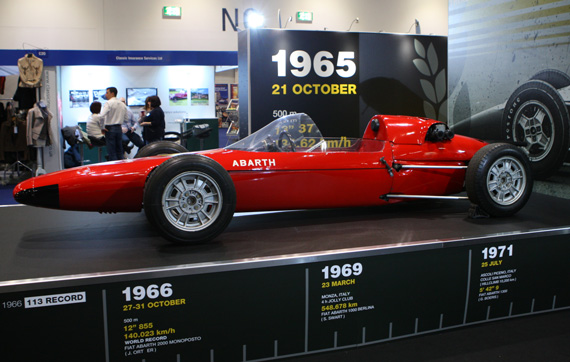
Abarth Record Monoposto. Abarth founder Carlo Abarth drove an Abarth Monoposto Record, Class G at Monza, winning the acceleration record for 400 metres and 500 metres. Unable to find the right driver, he decided to lose 30 kilograms in weight to slip into the tight cockpit himself.
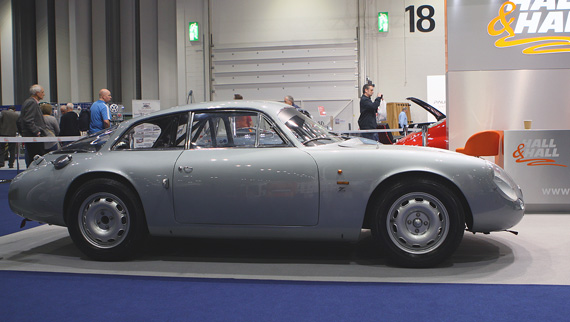
We have featured this Alfa Romeo SZ Coda Tronca before but it is far too nice to simply ignore it. Chassis number 00197 with bodywork by Zagato is one of three entered in Le Mans. Delivered new to Scuderia Sant’Ambroeus racing driver Sergio Pedretti in June 1962.
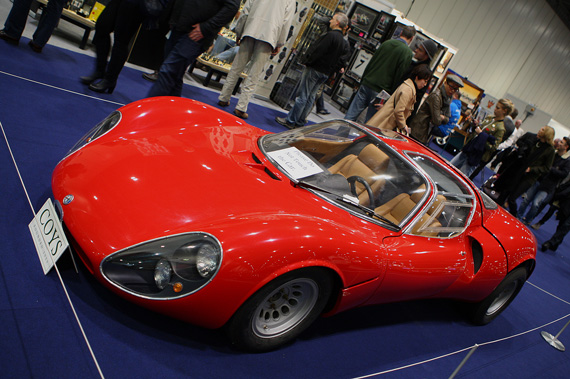
The show had expanded into two main halls this year. This Alfa Romeo T33 Stradale was the first car you saw when entering hall two. Unfortunately I can find no information concerning the car or its history.

Bristol by Zagato. Probably not Zagato’s finest work, or for that matter Bristol’s either. This 412 dates from 1981 so would have been built by the Bristol factory unlike the early models which I understand had the bodywork constructed by Zagato.
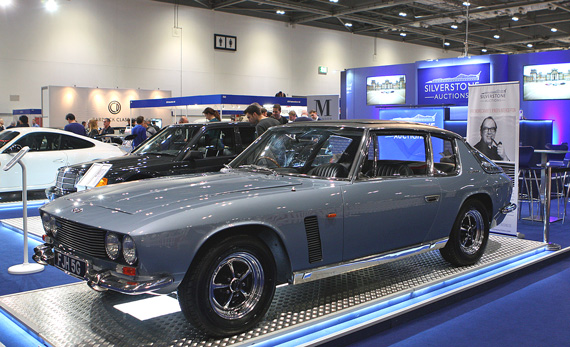
Jensen Interceptor. With apologies to our non-Brit readers, as this car will probably mean nothing to you but for us British, This Jensen Interceptor was once owned by non-other than Eric Morecambe of the famous comedy team of Morecambe and Wise. In an interview given by Eric’s chauffeur Mike Fountain, he describes the only down side of the car being a lack of room in the rear. When Mike had to drive Eric and his wife to an event somebody would have to be packaged up in the back. That person was usually Eric.
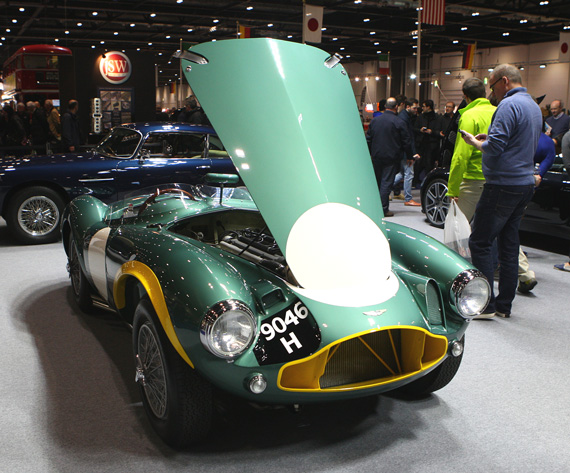
This Aston Martin DB3S Chassis number 5 of 11 built was original built for Sir David Brown himself as a road car which featured a one-off glass fibre body. However before Sir David could take delivery the car was commandeered by the factory works team to replace the many losses the team suffered during 1953. Then fitted with a lightweight alloy body chassis 05 went on to be driven by among others, Stirling Moss, Peter Collins, Roy Salvadori and Reg Parnell. Chassis 05 also featured in the Terry Thomas film “School for Scoundrels”.
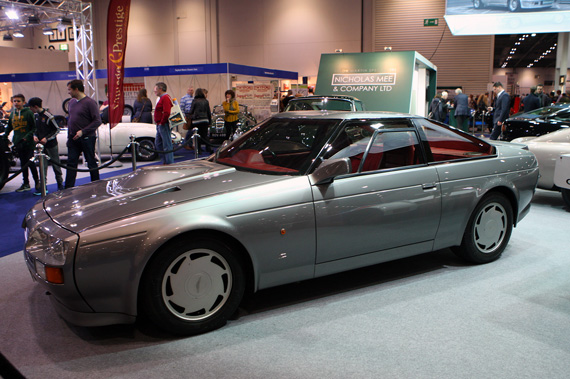
This 1986 Aston Martin V8 Vantage Zagato, number 9 of 50, seemed to split visitor’s opinions as to its looks. Alas when I was viewing her, those around me were in the anti-camp. As for me? I love it!
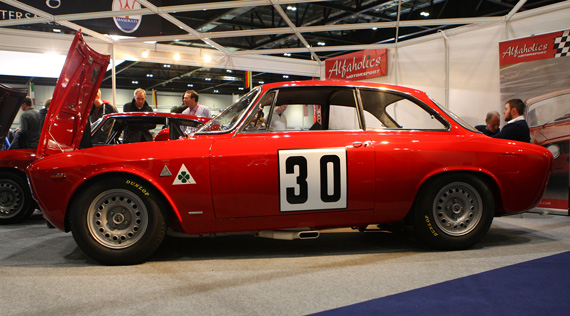
This rather stunning Alfa Romeo GTA formed part of the 1966 European Touring car championship-winning Autodelta team. Driven to three victories, two by Jochen Rindt and one by Nino Vaccarella. At the end of 1966 Carlo Chiti sold the car to Ove Anderson in Sweden; the car was only raced four times during the 1967 and 1968 season. Alfaholics have just completed a 4700 hour restoration return the car to the exact 1966 ETCC specification.

Another car we have featured before, but worth another look is this Delahaye Coupe by Chapron. Displayed by Delahaye at the 1953 Paris Auto Salon.
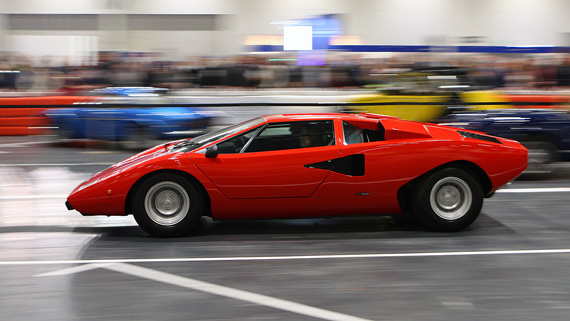
To my mind this is the best looking (apart from the prototype) Countach, the LP400 Periscopio. One of only 158 examples built.
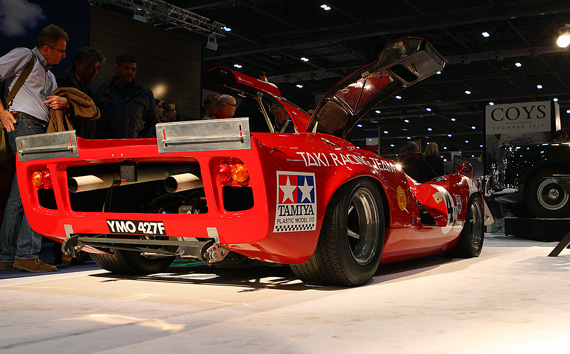
Lola T70 MK111 GT chassis SL73/130 was invoiced to the Fuji company of Tokyo Japan in February 1968. The car was raced in period by Masahiro Hasemi under the Taki Racing team banner.
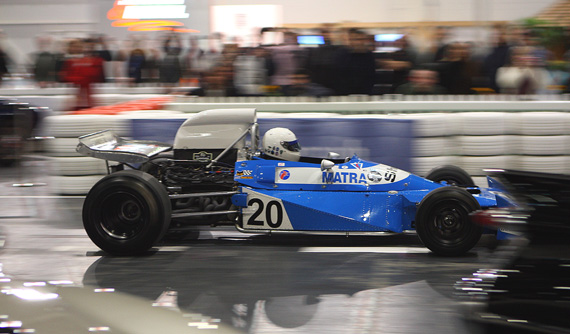
This Matra MS120 F1 car had to be the best sounding car to demo on Grand Avenue. Its just a shame they parked a Cadillac in front of were I was standing!
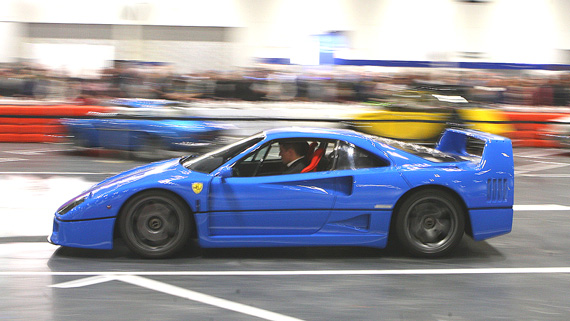
Ferrari F40. Repainted by the factory in blue, this F40 is a 1992 one owner example with less than 16000 kms from new.

1931 Bugatti T46 Superprofile. Chassis Number 46491 Constructed on a new engine and chassis purchased from the Schlumpf Museum.
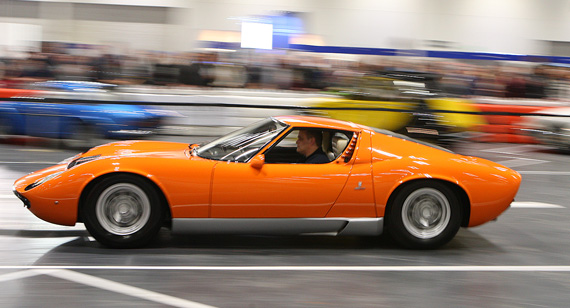
If whilst admiring this Lamborghini Miura you start to hum “On Days Like These” by London crooner Matt Monro you would not be alone because this Miura Chassis 3586 is believed to be the car driven by Rossano Brazzi in the opening sequence of the film.
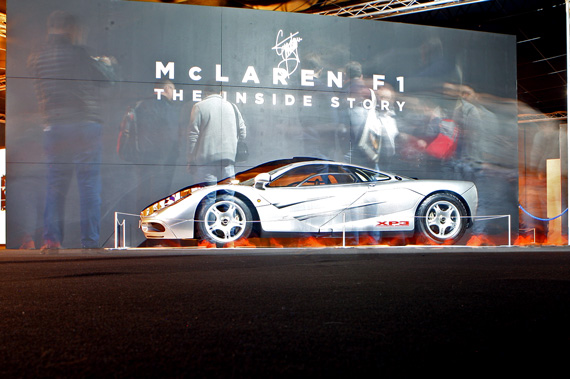
Ghostly McLaren. A major feature of the show was a display of McLaren F1 road cars in tribute to its designer Gordon Murray. 5 cars were displayed and this is example XP3 which I am led to believe was the first of the proper development cars and is still owned by the designer.
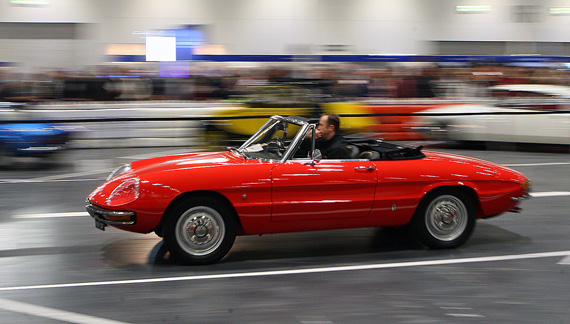
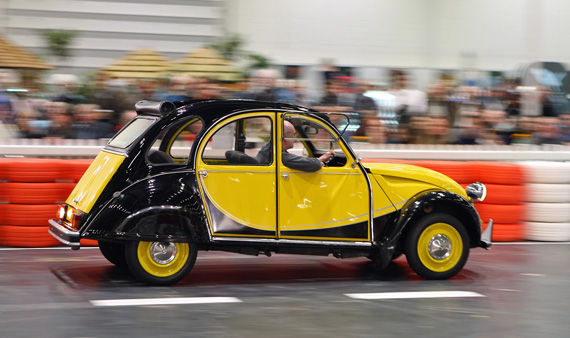
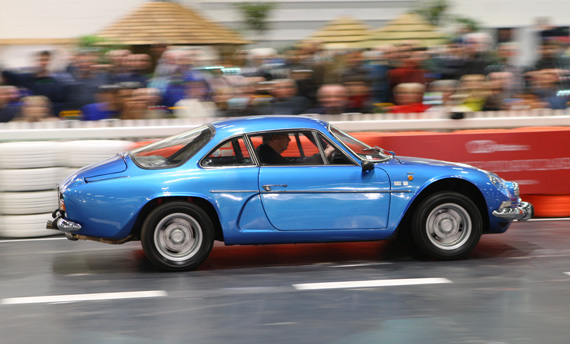
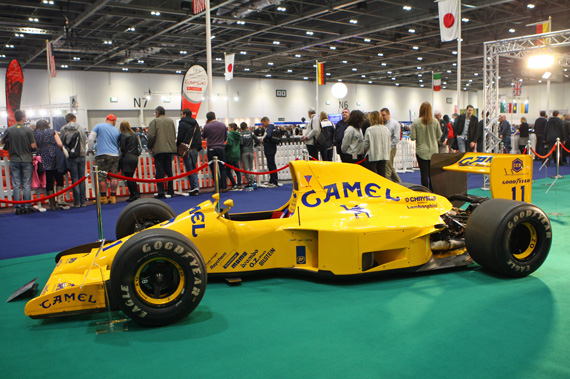
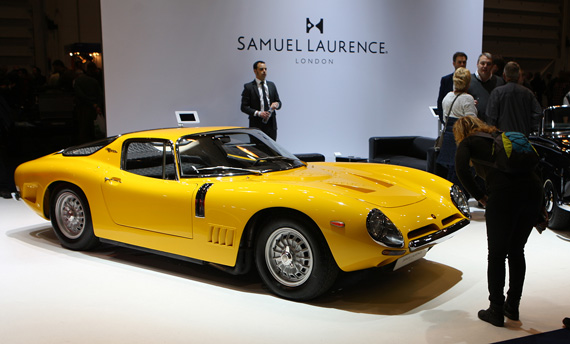
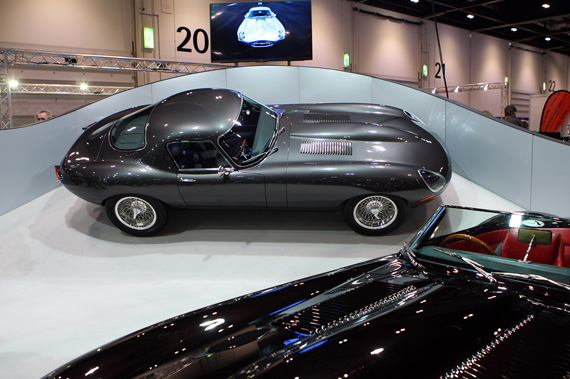
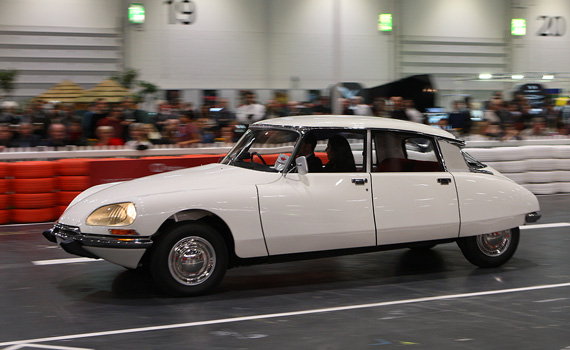
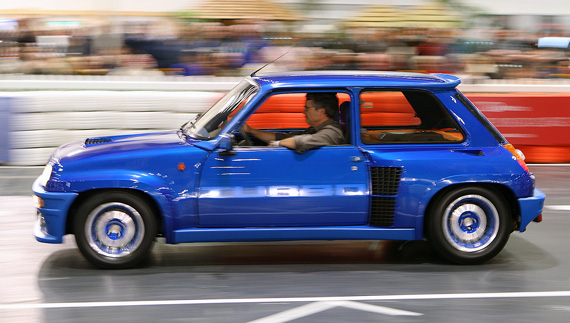
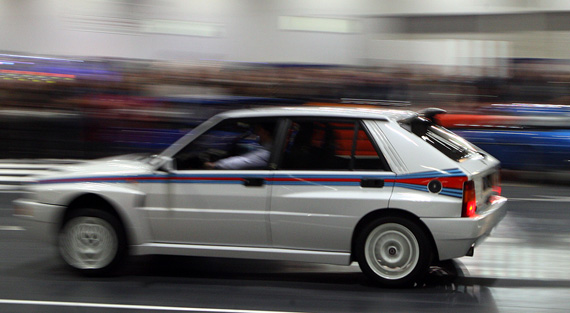
A moving experience indeed but the Bugatti’s body style should be called surprofilé(e).
It is la Bugatti but le coupé so it depends.Incidentally the Delahaye is also a coupé.
Remember, only chickens live in coops.
Keep up the good work.
Michel Van Peel